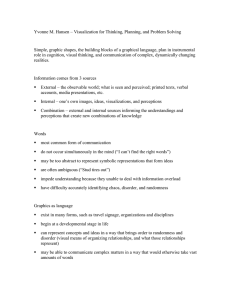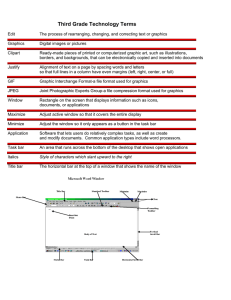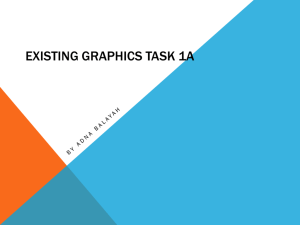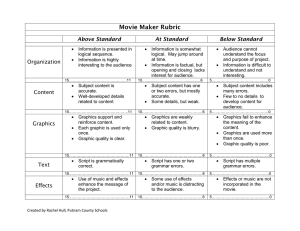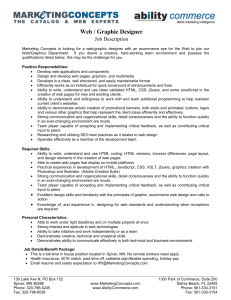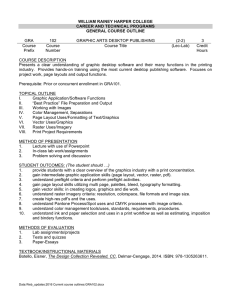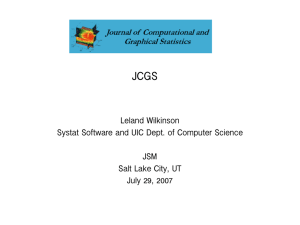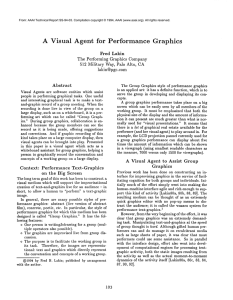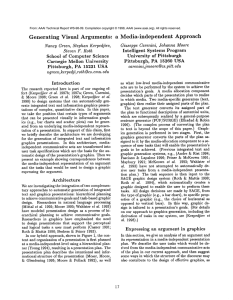Yvonne M. Hansen Visualization for Thinking, Planning, and Problem Solving
advertisement
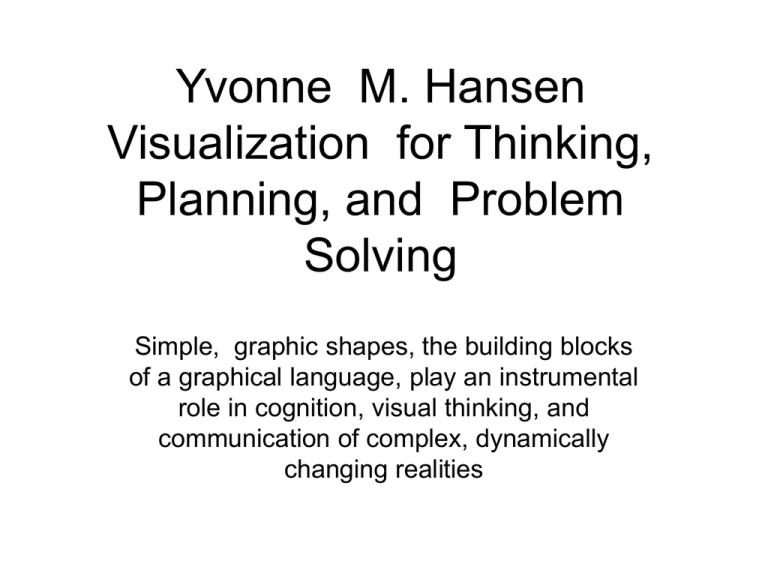
Yvonne M. Hansen Visualization for Thinking, Planning, and Problem Solving Simple, graphic shapes, the building blocks of a graphical language, play an instrumental role in cognition, visual thinking, and communication of complex, dynamically changing realities Information comes from 3 sources • External - the observable world; what is seen and perceived; printed texts, verbal accounts, media presentations, etc. • Internal - one’s own images, ideas, visualizations, and perceptions • Combination - external and internal sources informing the understandings and perceptions that create new combinations of knowledge Words • most common form of communication • do not occur simultaneously in the mind (“I can’t find the right words”) • may be too abstract to represent symbolic representations that form ideas • are often ambiguous (“Stud tires out”) • impede understanding because they unable to deal with information overload • have difficulty accurately identifying chaos, disorder, and randomness Graphics as language - #1 • exist in many forms, such as travel signage, organizations and disciplines • begin at a developmental stage in life • can represent concepts and ideas in a way that brings order to randomness and disorder – visual means of organizing relationships, and what those relationships represent Graphics as language - #2 • may be able to communicate complex matters in a way that would otherwise take vast amounts of words • may be able to “free” the mind otherwise constrained to the narrowness of words, labels, and classification systems • using graphics along with words allows the user to see relationships and structure among data that are obscured in a text-only situation – identify patterns and irregularities more easily The Graphic Tools • Circle, Square, Triangle, Line, Point, Fuzzy, and Combination • Based on many Gestalt principles such as similarity, enclosure, symmetry, etc. • Normally used in combination to express and idea or concept, reveal relationships, and capture the formation of new thoughts • Multiple combinations can represent entire systems, and have proved to be effective in collaborative work situations Ways to represent objects range from abstract to concrete • Most abstract: Verbal Symbols – definitions, descriptions, labels • Less abstract (More concrete): Graphic Symbols – image related graphics, concept related graphics, arbitrary graphics • Most concrete: Pictorial Symbols – 3D models, sculptures, reliefs, photographs, illustrations, drawings Animation • Useful for showing process • Useful for emphasizing aspects of a graphical representation (directing the audience’s attention) • Comprehension by re-creation – complex movements – complex environments • Provides the opportunity for multiple P.O.V. Simulations and Interactive Experiences • real-world activity without costs of realworld consequences • practice to acquire knowledge and skills • engages the audience, attunes them to the information being presented • allows natural clustering of information, improving comprehension of ideas
